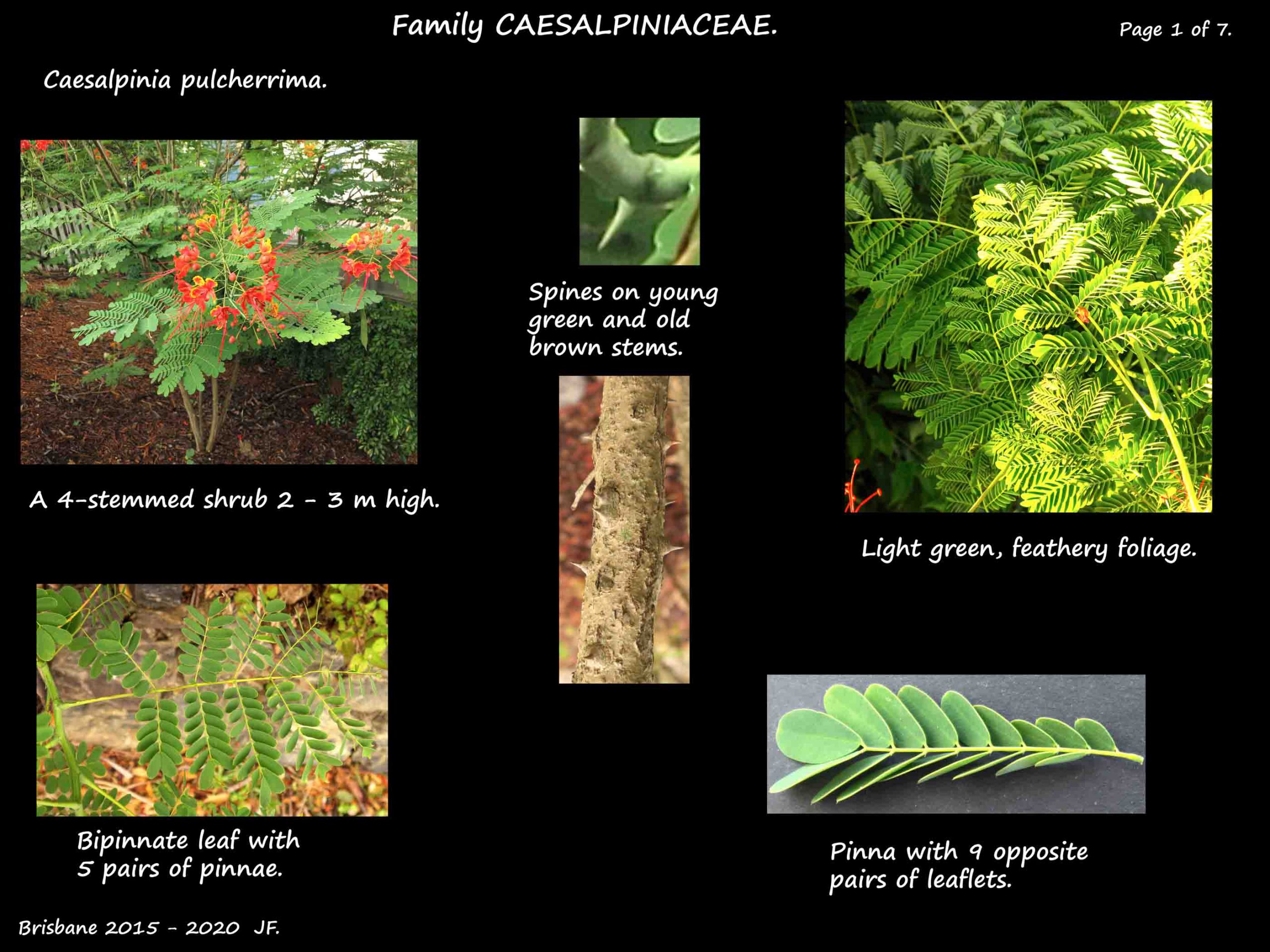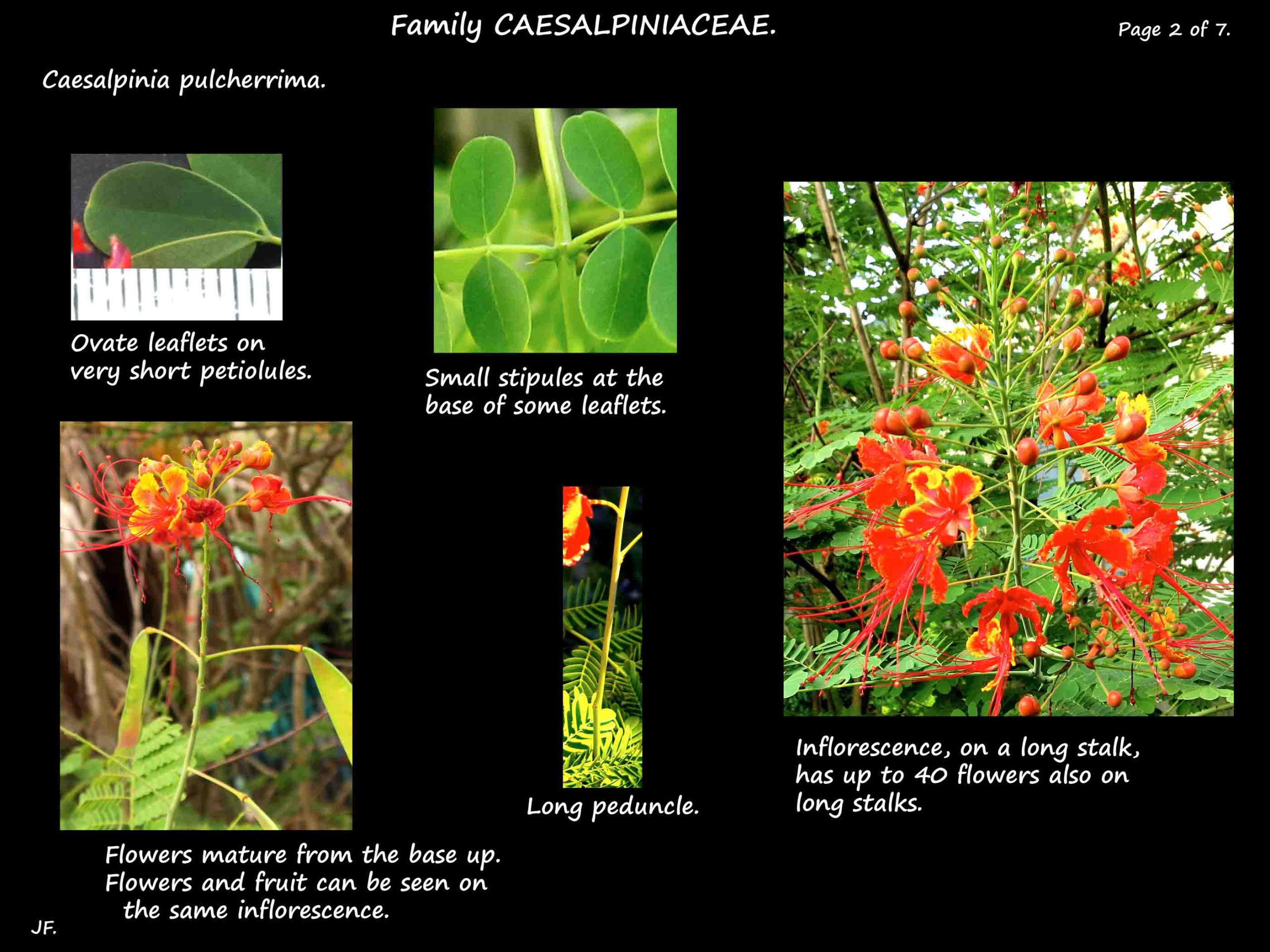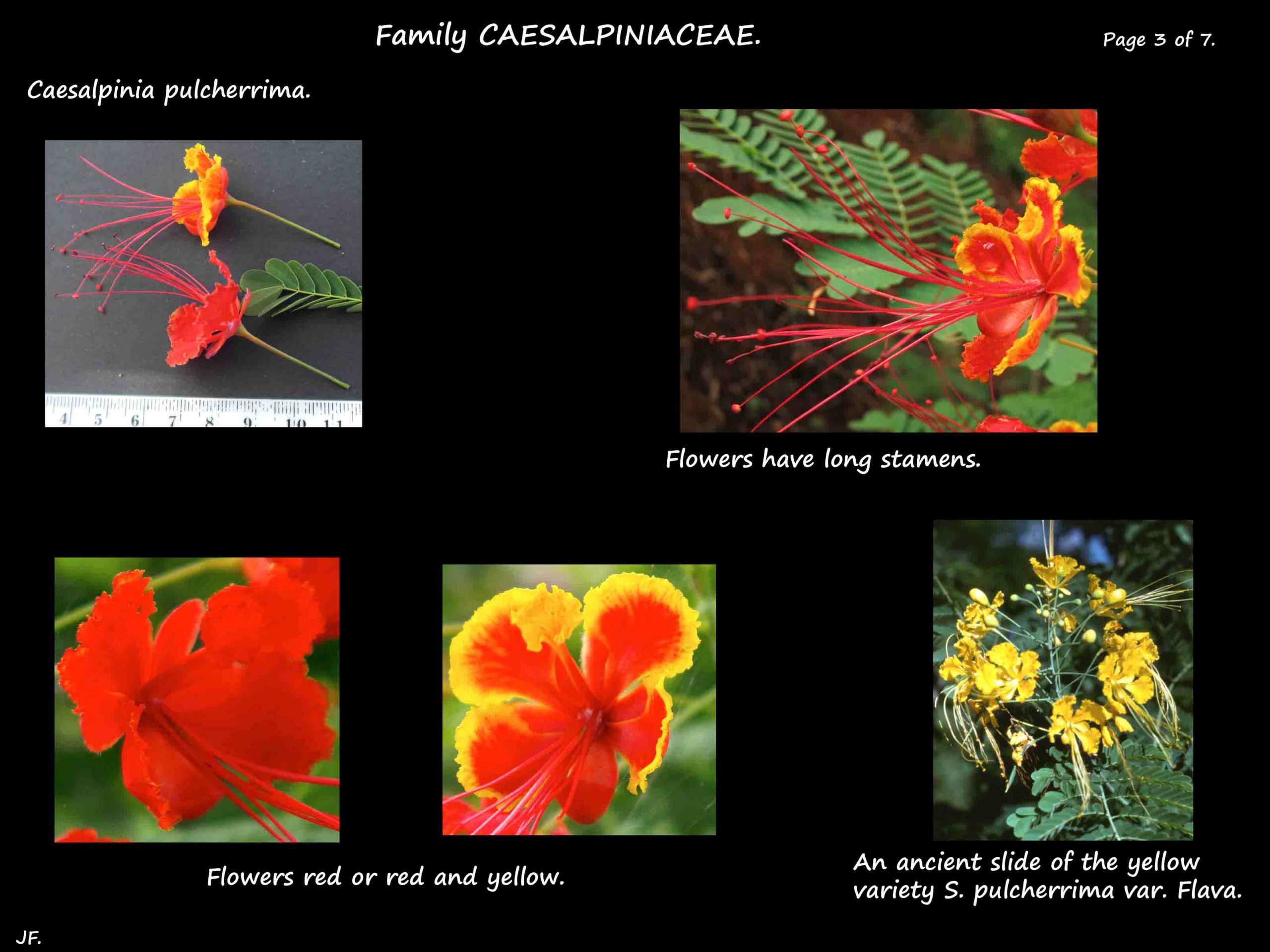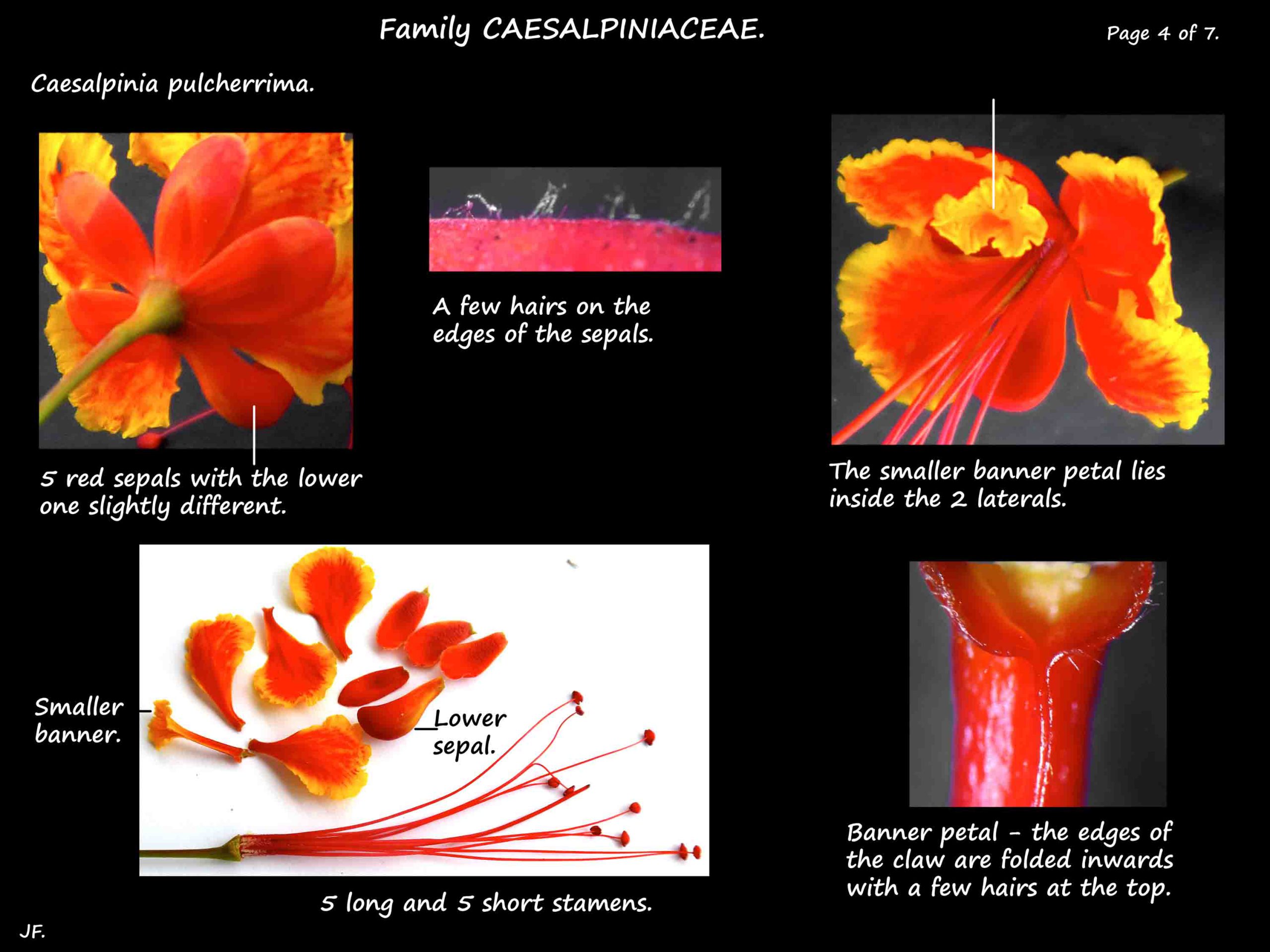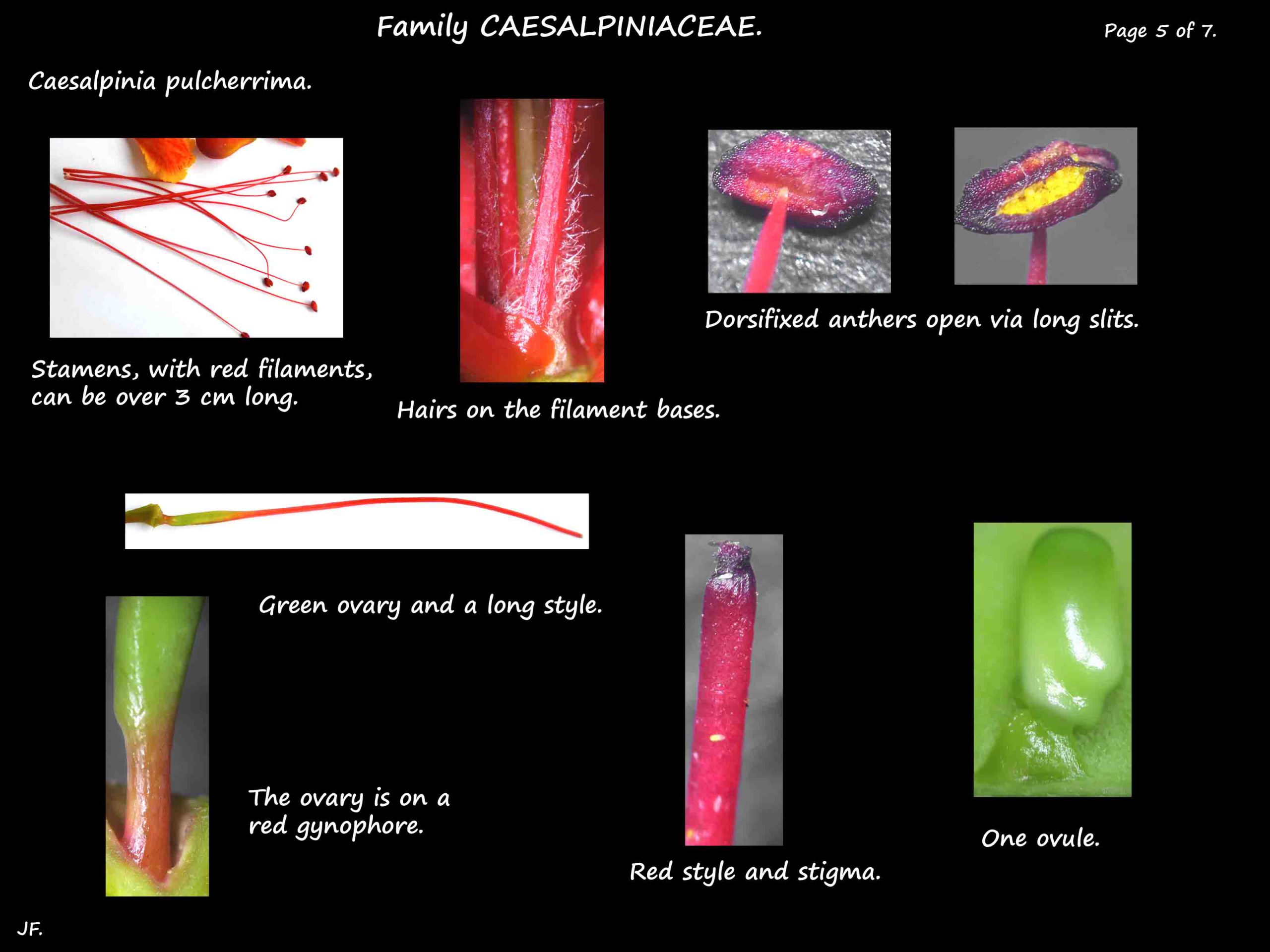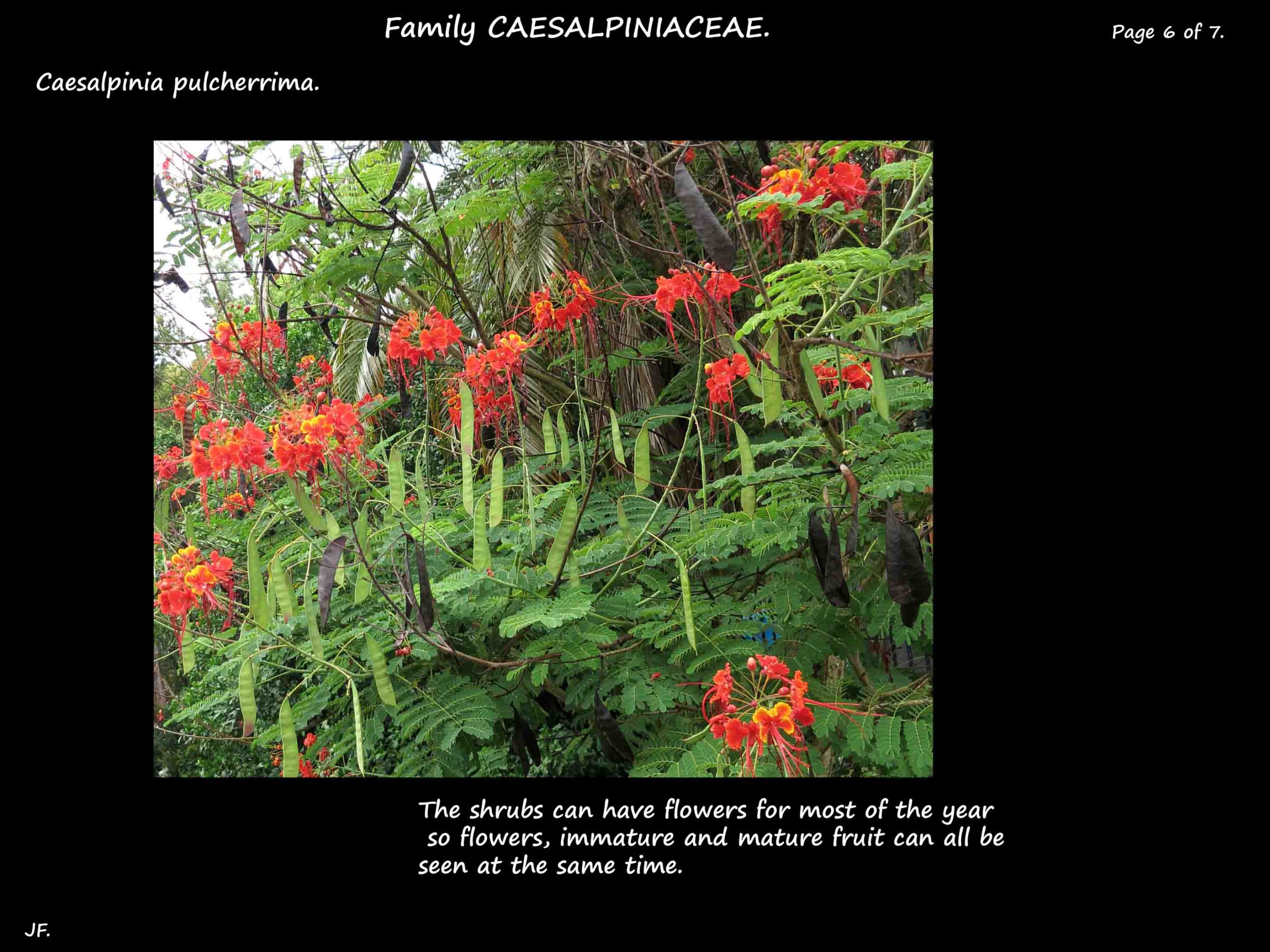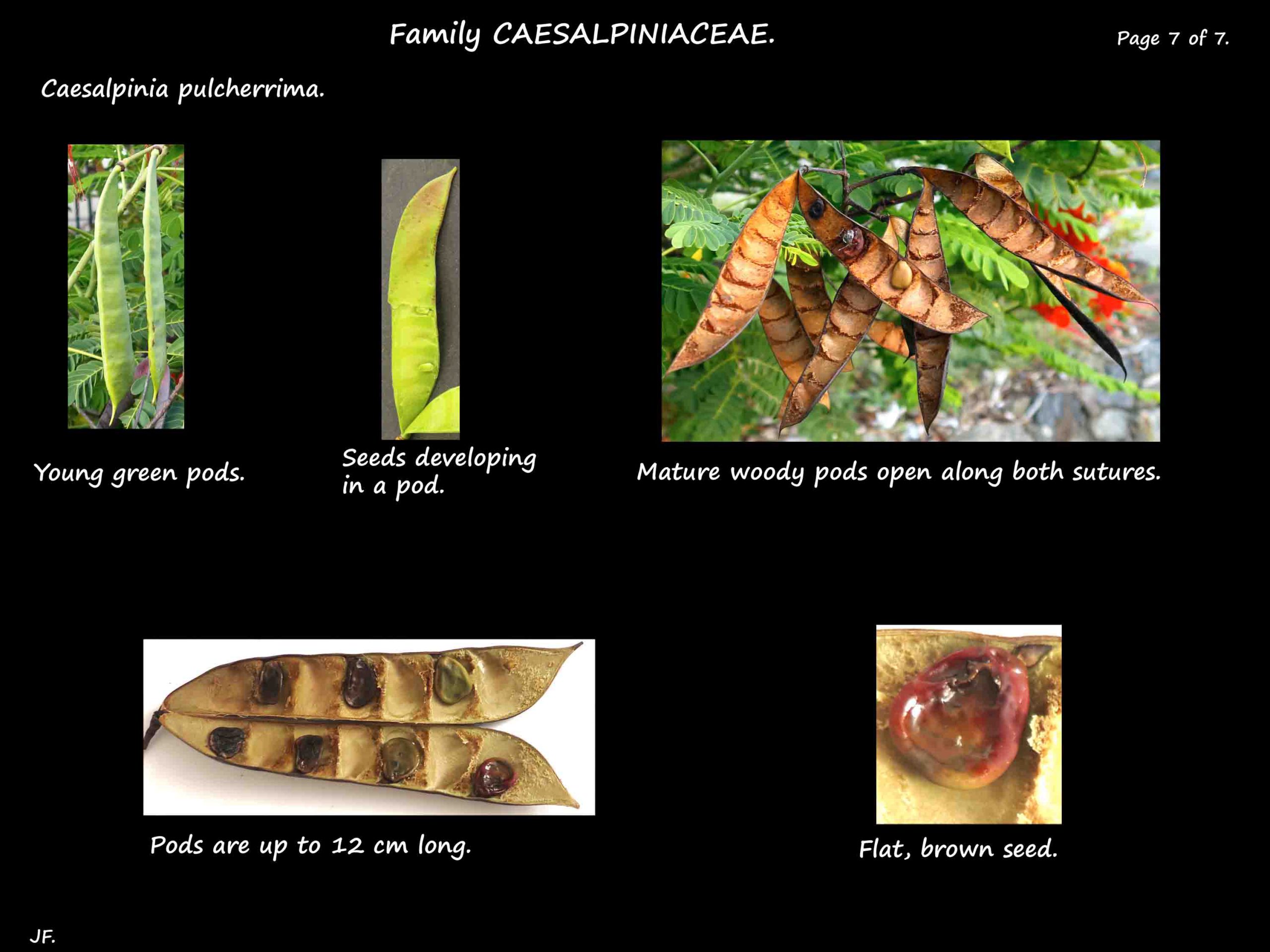Caesalpinia pulcherrima.
Family Caesalpiniaceae (subfamily Caesalpinioideae in Fabaceae s.l.).
Common names include Dwarf poinciana, Peacock flower and Red bird of paradise.
Of the around 150 species this is the one most commonly cultivated for its showy flowers.
They are similar to some of the native Australian species.
Evergreen or partly deciduous, trees or shrubs up to 3 or 5 m high.
The young stems may have soft green prickles that become hard and brown.
New growth is reddish.
The bipinnate leaves are alternately arranged.
The ovate leaves are around 30 cm long.
They have 6 to 9 (3 to 10) opposite pairs of pinnae each of which has 6 to 10 pairs of leaflets.
The light green leaflets are up to 2.5 cm long.
Terminal inflorescences have up to 40 flowers on a central axis.
The hairy bracts at the base of the peduncle (inflorescence stalk) fall off early.
Flowers mature from the bottom up.
Flowering over a long period, flowers and fruit may be seen on the same spike.
Each flower is on a long stalk or pedicel.
Flowers have 5 red sepals with a few hairs on the edges.
The lower sepal is larger and the end more cupped.
Four petals are around 2 cm long and the banner is smaller.
They have a narrow, clawed base and a wrinkled, circular upper section.
The upper or banner petal lies inside the 2 lateral or wing petals.
The edges of its narrow claw are folded inwards.
Flowers can be bright red or red and yellow.
C. pulcherrima var. flava has pure yellow flowers.
The 10 stamens, with red filaments, can be over 3 cm long.
There are hairs at the filament base.
Stamens with long and shorter filaments alternate.
The superior ovary, on a stalk, has a single locule with up to 10 ovules.
The fruit are pods up to 12 cm long that split along both sutures.
The flat seeds are dark brown to black.
J.F.
